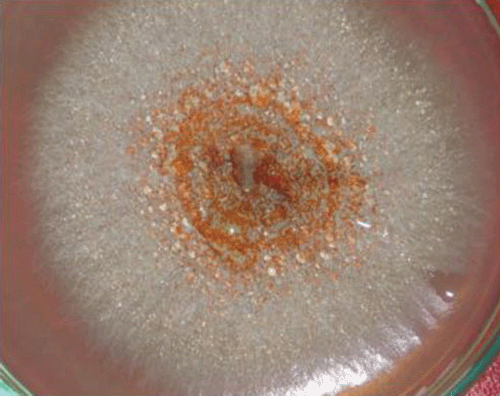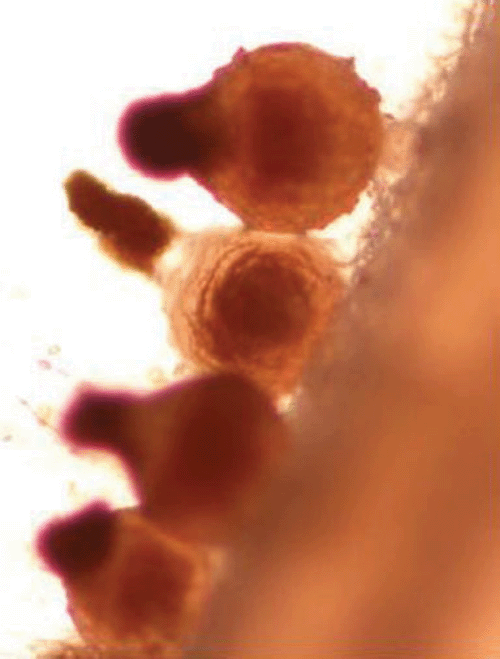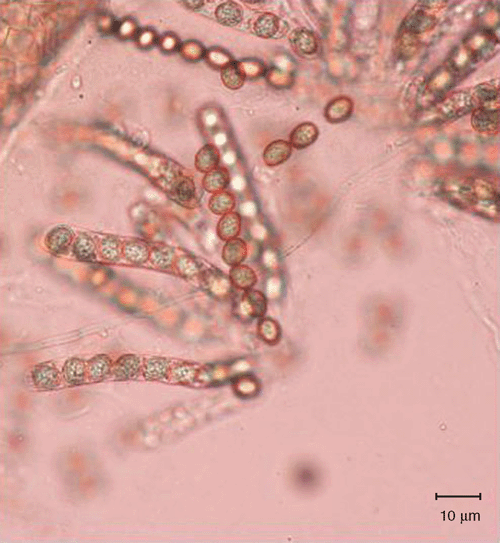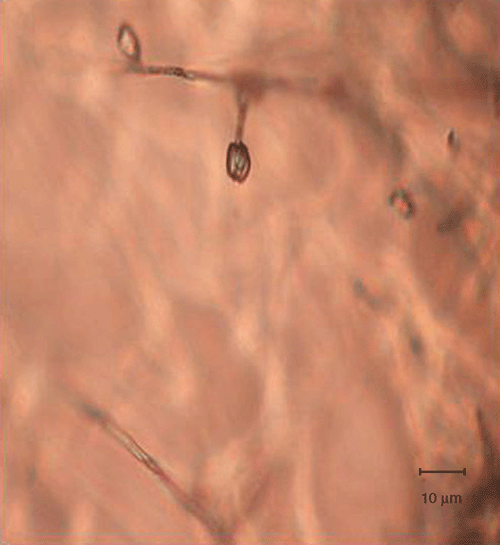First report of Neocosmospora vasinfecta associated with the root rot complex of peanuts in Vietnam
V. T. Dau A , L. T. Pham A , T. M. Luong B , L. M. T. Huynh B , NT Tran C , T. D. Ho D , H. M. T. Hoang D , H. T. Phan E and L. W. Burgess F GA Nghe An Plant Protection Sub-Department, Vinh, Nghe An, Vietnam.
B Quang Nam Plant Protection Sub-Department, Tam Ky, Quang Nam, Vietnam.
C College of Agriculture and Forestry, Hue University, Hue, TT Hue, Vietnam.
D TTHue Plant Protection Sub-Department, Hue, Vietnam.
E National Institute of Medicinal Materials, Hanoi, Vietnam.
F Faculty of Agriculture, Food and Natural Resources, The University of Sydney, NSW 2006, Australia.
G Corresponding author. Email: burgess.international@gmail.com
Australasian Plant Disease Notes 5(1) 79-81 https://doi.org/10.1071/DN10028
Submitted: 6 February 2010 Accepted: 7 July 2010 Published: 28 July 2010
Abstract
The occurrence of Neocosmospora vasinfecta is reported for the first time from Vietnam where it was found in association with peanut roots affected by root rot. It was isolated from diseased roots from peanut crops in Nghe An Province in March 2007 but perithecia were not observed on the diseased roots. However, characteristic perithecia were produced abundantly in pure cultures on potato dextrose agar and carnation leaf-piece agar. Subsequently, perithecia were observed on diseased peanut roots in Thua Thien Hue Province. Representative cultures from Nghe An were confirmed as Neocosmospora vasinfecta by the Centraalbureau voor Schimmelcultures (CBS).
Diagnostic studies were undertaken on the fungal pathogens associated with the root, crown and stem rot complex of peanuts in Nghe An, Quang Nam and Thua Thien Hue Provinces, Vietnam, in the growing seasons of 2006 and 2007. These involved ad hoc surveys to document symptoms and collect samples of root, crown and stem rots for isolation and identification of putative fungal pathogens, using procedures described in Burgess et al. (2008).
Root rot samples were washed in tap water, surface sterilised in 70% ethyl alcohol for 5 s, immediately rinsed in sterile water and damp-dried on sterile paper tissues. Sections of root (2–3 mm) were removed from the margin of diseased and symptomless tissue and plated on water agar containing streptomycin sulfate (1.0 g/L) and neomycin sulfate (0.12 g/L). Colonies that developed from the sections were transferred to carnation leaf-piece agar (CLA), and then purified by hyphal tipping (Burgess et al. 2008) to CLA and potato dextrose agar (PDA). Some cultures, putatively identified as Neocosmospora vasinfecta, produced abundant orange-red perithecia in the mycelium in colonies on PDA (Fig. 1) and on leaf pieces in CLA (Fig. 2). The perithecia contained thin-walled cylindrical asci. The eight globose to ellipsoidal ascospores were uniseriately arranged in the ascus (Fig. 3). The anamorph stage, small cylindrical to oblong-ellipsoidal, hyaline, one-celled conidia were formed in false-heads on long, thin, sometimes branched, conidiophores (Fig. 4) arising from vegetative mycelium, on both media. These morphological features corresponded to the description of N. vasinfecta in Cannon and Hawksworth (1984).

|

|

|

|
Nine putative cultures of N. vasinfecta from Nghe An Province were forwarded to the Centraalbureau voor Schimmelcultures (CBS) where the identification of eight cultures was confirmed by sequencing. They were identical to each other and related to AY381142. The Nghe An Plant Protection Sub-Department accession numbers (NA prefix), and the corresponding CBS reference numbers are: NA61 = CPCI4197; NA62 = CPC14198; NA63 = CPC14199; NA64 = CPC14200; NA65 = CPC14201; NA66 = CPC14203; NA67 = CPC14204; NA68 = CPC14205. One culture, NA69 = CPC14202, differed slightly from the other cultures but was still closely related to AY381142.
Bright orange-red perithecia were only observed on diseased peanut taproots in the field in Thua Thien Hue Province. N. vasinfecta was not isolated from peanut root rot samples, and perithecia were not observed on diseased roots from Quang Nam Province. Although the fungus was commonly isolated from diseased roots in Nghe An Province, perithecia were not observed on these roots. More extensive taxonomic research is needed on the cultures listed above to determine their varietal status.
Further studies are also needed to clarify the role of N. vasinfecta in the root rot complex in peanuts in Vietnam. However, it should be noted that Fuhlbohm et al. (2007) have clearly shown N. vasinfecta to be pathogenic to peanuts in Australia. It has also been reported as a pathogen of peanuts (syn. groundnuts) in South Africa (Baard and van Wyk 1985) and Taiwan (Huang et al. 1992). Additional studies are needed to clarify the distribution and host range of this fungus in Vietnam given that it has a wide distribution in tropical and temperate regions, is commonly associated with roots of leguminous crops, and has been isolated from soil (Cannon and Hawksworth 1984).
Acknowledgements
The authors gratefully acknowledge financial support from the Australian Centre for International Agricultural Research (ACIAR) through CP/2002/115 – Diseases of crops in the central provinces of Vietnam: diagnosis, extension and control (2005–2008). The authors gratefully acknowledge financial support from the Australian Centre for International Agricultural Research (ACIAR) through CP/2002/115 – Diseases of crops in the central provinces of Vietnam: diagnosis, extension and control (2005–2008), and the taxonomic assistance provided by the Centraalbureau voor Schimmelcultures.
Baard SW, van Wyk PS
(1985)
Neocosmospora vasinfecta pathogenic to groundnuts in South Africa. Phytophylactica 17, 49–50.

Cannon PF, Hawksworth DL
(1984) A revision of the genus Neocosmospora (Hypocreales). Transactions of the British Mycological Society 82, 673–688.
| Crossref | GoogleScholarGoogle Scholar |

Fuhlbohm MF,
Tatnell JR, Ryley MJ
(2007)
Neocosmospora vasinfecta is pathogenic on peanut in Queensland. Australasian Plant Disease Notes 2, 3–4.
| Crossref | GoogleScholarGoogle Scholar |

Huang JW,
Chen SS, Chung WC
(1992) Neocosmospora foot rot of peanut in Taiwan. Plant Pathology Bulletin 1, 203–205.



